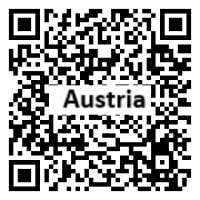Introduction
Background
Once the center of power for the large Austro-Hungarian Empire, Austria was reduced to a small republic after its defeat in World War I. A State Treaty signed in 1955 recognized Austria's independence.
Geography
Area
total: 83,871 sq km
land: 82,445 sq km
water: 1,426 sq km
Climate
temperate; continental, cloudy; cold winters with frequent rain and some snow in lowlands and snow in mountains; moderate summers with occasional showers
Natural resources
oil, coal, lignite, timber, iron ore, copper, zinc, antimony, magnesite, tungsten, graphite, salt, hydropower
People and Society
Population
8,940,860 (2023 est.)
Ethnic groups
Austrian 80.8%, German 2.6%, Bosnian and Herzegovinian 1.9%, Turkish 1.8%, Serbian 1.6%, Romanian 1.3%, other 10% (2018 est.)
Languages
German (official nationwide) 88.6%, Turkish 2.3%, Serbian 2.2%, Croatian (official in Burgenland) 1.6%, other (includes Slovene, official in southern Carinthia, and Hungarian, official in Burgenland) 5.3% (2001 est.)
Religions
Roman Catholic 55.2%, Muslim 8.3%, Orthodox 4.9%, Evangelical Christian 3.8%, Jewish 0.1%, other 5.4%, none 22.4% (2021 est.)
Population growth rate
0.31% (2023 est.)
Government
Government type
federal parliamentary republic
Capital
name: Vienna
Executive branch
chief of state: President Alexander VAN DER BELLEN (since 26 January 2017); note - President Alexander VAN DER BELLEN reelected to a second six-year term on 9 October 2022
head of government: Chancellor Karl NEHAMMER (since 6 December 2021)
Legislative branch
description: bicameral Federal Assembly or Bundesversammlung consists of:
Federal Council or Bundesrat (61 seats - currently 60; members appointed by state parliaments with each state receiving 3 to 12 seats in proportion to its population; members serve 5- or 6-year terms)
National Council or Nationalrat (183 seats; members directly elected in single-seat constituencies by proportional representation vote; members serve 5-year terms)
Economy
Economic overview
one of the strongest EU and euro economies; diversified trade portfolios and relations; enormous trade economy; Russian energy dependence, but investing in alternative energy; aging labor force but large refugee population; large government debt
Real GDP (purchasing power parity)
$484.698 billion (2021 est.)
$463.574 billion (2020 est.)
$495.557 billion (2019 est.)
Real GDP per capita
$54,100 (2021 est.)
$52,000 (2020 est.)
$55,800 (2019 est.)
Agricultural products
milk, maize, sugar beet, wheat, barley, potatoes, pork, triticale, grapes, apples
Industries
construction, machinery, vehicles and parts, food, metals, chemicals, lumber and paper, electronics, tourism
Remittances
0.66% of GDP (2021 est.)
0.69% of GDP (2020 est.)
0.67% of GDP (2019 est.)
Exports
$268.277 billion (2021 est.)
$224.734 billion (2020 est.)
$247.738 billion (2019 est.)
Exports - partners
Germany 28%, United States 7%, Italy 6%, Switzerland 5% (2019)
Exports - commodities
vaccines and cultures, cars, packaged medicines, vehicle parts, broadcasting equipment (2021)
Imports
$265.769 billion (2021 est.)
$211.736 billion (2020 est.)
$231.992 billion (2019 est.)
Imports - partners
Germany 39%, Italy 7%, Czechia 5% (2019)
Imports - commodities
cars, vehicle parts, broadcasting equipment, refined petroleum, packaged medical supplies (2019)
Exchange rates
euros (EUR) per US dollar -
Exchange rates:
0.845 (2021 est.)
0.876 (2020 est.)
0.893 (2019 est.)
0.847 (2018 est.)
0.885 (2017 est.)
Page last updated: Thursday, December 14, 2023
